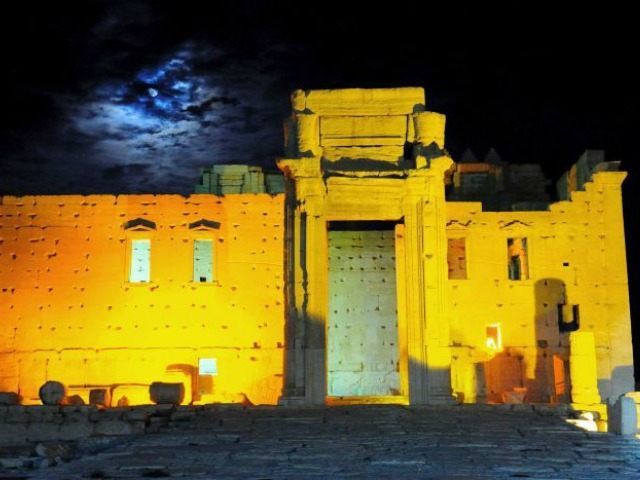Replicas of an arch, which is reportedly among the last remaining parts of the 2,000 year-old Temple of Bel in the ancient Syrian city of Palmyra that was razed by the Islamic State (ISIS/ISIL), will stand in London’s Trafalgar Square and New York’s Times Square.
“The temple has been systematically razed, with the 50-foot-tall arch among the few remaining elements of the building still standing,” reports United Press International (UPI). “The temple, dedicated in 32 A.D. to the Mesopotamian god Bel, attracted 150,000 tourists per year until 2011, when the civil war in Syria began.”
Meanwhile, BBC reports that “the 2,000-year-old arch is all that remains of the Temple of Bel, part of the Syrian Unesco World Heritage site, captured by militants in May.”
The full-scale replicas, currently under construction in China, will be reportedly recreated from photographs, using a 3D printer. They are expected to stand in London’s Trafalgar Square and New York’s Times Square during World Heritage Week in April 2016.
UPI notes, “The project comes after researchers from the Institute for Digital Archeology [IDA] — an effort by Harvard University, Oxford University in Britain and Dubai’s Museum of the Future — embarked on a ‘Million Image Project’ to obtain 3D photographic data to reconstruct the arch digitally. The full-scale models are being recreated with the world’s largest 3D printer, and made of stone powder and lightweight composite materials. The structures will be temporary.”
“They are meant to show defiance of [ISIS] attempts to erase the Middle East’s pre-Islamic history and to demonstrate how new technology can be used in archeology,” adds the report.
Moreover, the IDA hopes the arch will shed light on the importance of cultural heritage, reports BBC, noting that ISIS jihadists have pillaged and demolished several ancient sites to Palmyra that pre-date Islami in Iraq.
The jihadists group denounces the ancient structures as symbols of “idolatry.”
“If you destroy something we can rebuild it again. The symbolic value of these sites is enormous. We are restoring dignity,” reportedly said Roger Michel of the IDA.
The IDA’s Alexy Karenowska, added, “People say, ‘should we be worrying about this stuff when human lives are being lost? Of course all of this stuff takes second place to human life, but these cultural objects are very important to give a sense of place and community.”
ISIS has been selling artifacts on the black market to finance its operations. Documents seized by U.S. Special Operations Forces during a raid targeting a top ISIS official in Syria in May revealed that the jihadist group has set up “war spoils” departments to manage revenue streams from stolen antiquities, Reuters reports.
The terrorist group has also set up a “Diwan,” which is roughly equivalent to a government ministry, of Natural Resources that is in charge of handling antiquities.
“To the horror of international historians and archeologists, [ISIS] has also destroyed a number of significant sites in 2015, including the ancient cities of Nimud and Hatra in Iraq, and the Shagraf shrine, the St. Elian monastery, and the Palmyra Temple of Baal and Temple of Bel in Syria,” notes UPI.

COMMENTS
Please let us know if you're having issues with commenting.